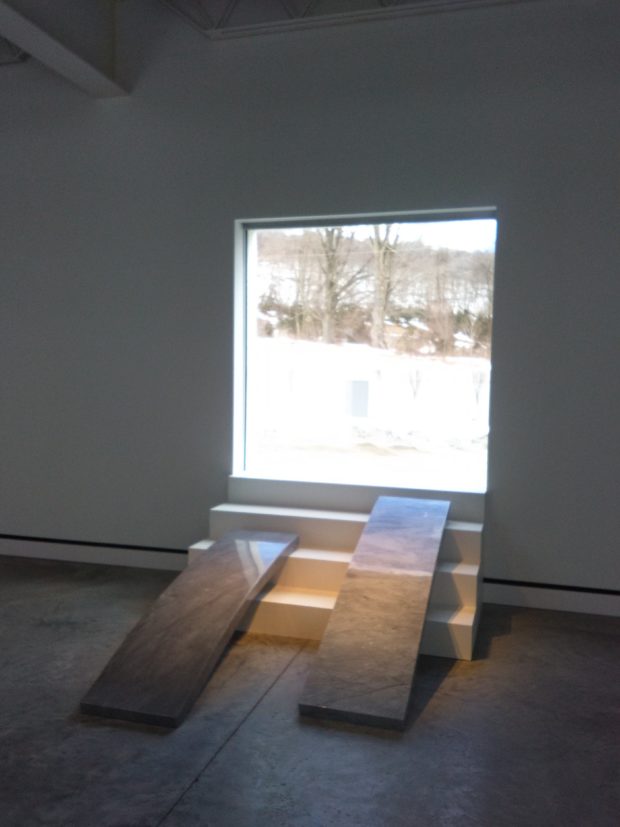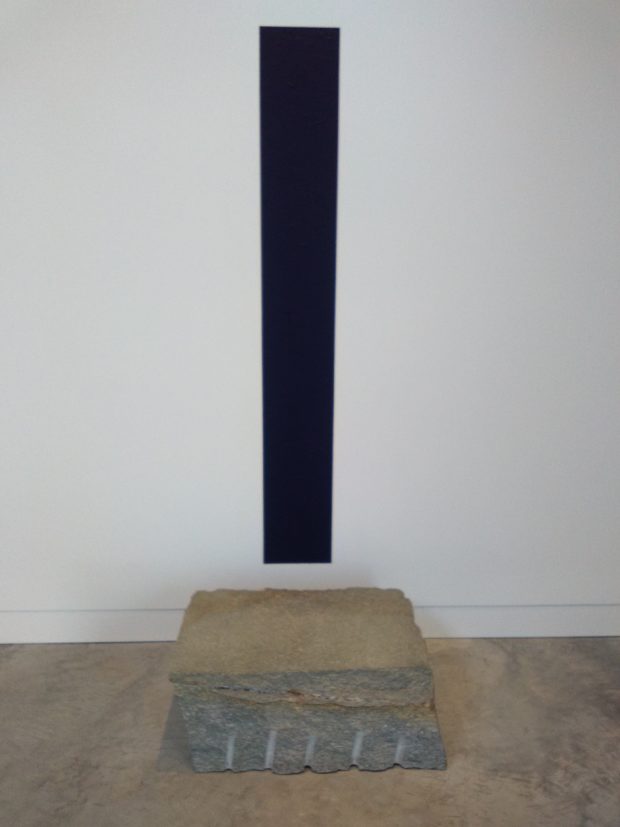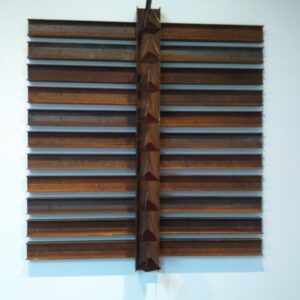
Very often, if you enquire about Italian art with an average American interlocutor, the reply you get goes for the Renaissance. Botticelli, Michelangelo, Leonardo, Caravaggio, are the hits. If you narrow the question down to the 20th Century, Futurism might be blurted out, but if you look for more details, or names of artists belonging to that Avant-garde movement, you are likely to get silence and frowning as replies.
It would be short-sighted and unfair to blame the average American interlocutor: this lack of knowledge has much more to do with Italy’s failure to push its 20th Century treasures under the spotlight, than with American ignorance in art culture.
Though eternally grateful to the illustrious quartet of maestri up there, we know, as Italians, that Italian art is much wider. The 20th Century, for instance, is such a rich age, in terms of multi-diverse visions, inspirations and approaches to creativity that it cannot possibly be overlooked, or sloppily dismissed with some vague reference to Futurism.
New York City is working towards the proper recognition of the 20th Century as golden age of Italian art with two recently-established cutting-edge art institutions: the Center for Italian Modern Art (CIMA), and Magazzino Italian Art.
The readers of La Voce di New York are already familiar with CIMA thanks to the many articles

published about their exhibitions and events. And they are getting familiar with Magazzino Italian Art too. Having opened its doors to the public less than one year ago, Magazzino can already boast too-good-to-be-true events: Maestro Michelangelo Pistoletto, re-enacting his famous Walking Sphere performance last November, across the streets of Cold Spring (NY), is unquestionably an event that falls under the category “too good to be true.”
A private warehouse art space, which Maecenas Nancy Olnick and Giorgio Spanu have first envisioned and then given shape to just a few minutes away from Cold Spring center, Magazzino is a hub where Italian contemporary art thrives. Free to anyone, Magazzino aims at widening public appreciation and education of Post-war and Contemporary Italian Art in the United States, on Arte Povera especially. Blossomed in Italy in the 1960s and 70s, the movement of Arte Povera — literally, “Poor Art” — advocated going-back to very simple, humble, organic materials like everyday objects, rocks, rags, stones, wood, metal. The “Poveristi” took a radical stance in response to their dissatisfaction with the values established by political, industrial and cultural institutions in Italy. Their work came at a defining moment in the 1960s, as Italy was transitioning into an era of burgeoning industrialization, student rebellion, and a decline of the economic miracle of the 1950s.

On March 1, 2018, Magazzino has put another notch on their belt. The opening of a new unprecedented exhibition, Arte Povera: From the Olnick Spanu Collection: a comprehensive panorama of 12 artists associated with the Arte Povera movement including Giovanni Anselmo, Alighiero Boetti, Pierpaolo Calzolari, Luciano Fabro, Jannis Kounellis, Mario Merz, Marisa Merz, Giulio Paolini, Pino Pascali, Giuseppe Penone, Michelangelo Pistoletto and Gilberto Zorio. A new accomplishment, which is also a sort of tribute: in 1968 the exhibition Arte Povera & Azioni Povere, curated by Germano Celant, was presented at the Antichi Arsenali della Repubblica in Amalfi, marking a seminal moment for the constitution of the Arte Povera movement. To mark the 50th anniversary of Arte Povera & Azioni Povere, the exhibition Arte Povera: From the Olnick Spanu Collection presents 76 artworks ranging from painting, sculpture, photography, works on paper and installations.

Part of the Olnick Spanu Collection of Post-war Italian art, many of the artworks on display have never been exhibited in the United States, and it would be no exaggeration to say that they are nectar of the gods for any art lover.
Materials are so powerfully deployed, associations so intriguingly evoked, that the viewer accessing the halls is literally taken aback in wonder. From Kounellis, whose iron girders and metal sling can meet coffee, in an unpredictable game of weights, textures and smells — Untitled (Scales and Coffee) — to Luciano Fabro, whose fascination with marble makes him envision Two Nudes Descending a Staircase in a couple of slabs of Bardiglio laid on three steps, or a caramel-colored slurry flowing out of a silk-made column — Marble Slurry and Natural Silk [Foot].
A slab of white marble — Carrara this time— is also astonishingly hanging from the ceiling in Luciano Fabro’s Ephesus II: the contrast between heaviness and lightness synthesized in the suspending stone, challenges the imagination and, as a fact, the perception of the whole artwork, which looks more like a living aerial creature than an inanimate object. In addition to his brand leit-motif, the slate igloo — From Continent to Continent — Mario Merz is there with several other pieces signed by his all-recognizable light-blue neon — Pittore in Africa, Che fare?, At Borders.
Giuseppe Penone welcomes the visitor in the garden at Magazzino with his Fingernail and Marble — an aquamarine glass-made fingernail connecting the world to the white marble block — while Giovanni Anselmo’s The View Up To What Lies Beyond the Sea — a block of granite placed at the base of a deep-blue vertical stripe painted on the wall — seems to open a breach in the spatial and temporal dimensions of the here and now and offer a privileged standpoint on the sea, or the idea of the sea.
Even listing each and every artwork on display would not do justice to the exhibition. It needs to be seen: the feast of imagination Magazzino Italian Art has put together has to be experienced in person.

“Magazzino has been inspired by the legacy of Margherita Stein,” explained Selika Cerofolini, Magazzino Italian Art Communications Manager, when we visited the show. “Margherita was a pioneer and art advocate of Arte Povera active in Turin and in Milan since 1966. She believed in Arte Povera, and her goal was not to sell, but to share and educate. Margherita helped the artists that fell under the umbrella of Arte Povera, each and every one with their own personal and diverse style — she used to say that every artist was like a diamond with their own different facet. Margherita, just like Germano Celant, wanted to bring Arte Povera to the US.”
Nancy Olnick and Giorgio Spanu have taken up Margherita’s baton and continued in the line of sharing and educating by also adding a further layer to Magazzino’s identity — that of a research center. “We want Magazzino to be a research center on Arte Povera and contemporary Italian art”, goes on Ms Cerofolini, when we move to the beautiful, light-drenched library. “And we want researchers to come here and benefit from our archive on Arte Povera and our library, which at the moment includes 4000 books. Acquisition is non-stop: our long-term goal is to scan and upload online every book we acquire.”

Magazzino Italian Art also works beyond its warehouse walls in Cold Spring. “Continuing its commitment to promoting Italian Contemporary art in the United States, Magazzino has joined the Garrison Art Center on March 10 for the exhibition Marco Bagnoli, Domenico Bianchi, Remo Salvadori. The show marks the first collaboration between the two institutions, and was an effort to promote cultural exchange and partnership in the Hudson Valley arts community,” further comments Ms Cerofolini.
For Magazzino Italian Art, Bagnoli, Bianchi and Salvadori represent the generation of artists following the Arte Povera group, keeping the conceptual foundation of their predecessors while delving into the relationship between body and soul, material and ephemeral. And Magazzino hopes the exhibitions at both institutions will give the visitors an opportunity to explore the trajectory of Italian Postwar and Contemporary art from the 60s until today.
In addition, Olnick and Spanu continues to further their commitment to the arts also through the Olnick Spanu Art Program, a one-year artist residency program that invites contemporary Italian artists to create site-specific installations on the couple’s property in Garrison.
As a fact, the story of the couple looks, in itself, like a work of art. After falling for the mission of Castello di Rivoli in Turin, they toured the world and began their collection by acquiring works by Modern masters and American Pop artists. Their admiration of Italian art, culture, and interest in exploring conceptual artistic
movements of a similar period but from a different perspective, took them on a journey that eventually

led them to developing one of the largest collections of Postwar Italian art, as well as Murano glass, in America.
Their passion is embodied in Magazzino Italian Art, which is not a museum, nor an art gallery. It is a space where art is free: giving freedom back to where it belongs is a priceless act of generosity, civil commitment, and inspired vision.
The hope is that, in the not too distant future, if enquired about Italian art, an American interlocutor might reply Michelangelo, meaning Buonarroti and Pistoletto. And then add Alighiero Boetti, Gilberto Zorio, Giulio Paolini, Mario Merz…









